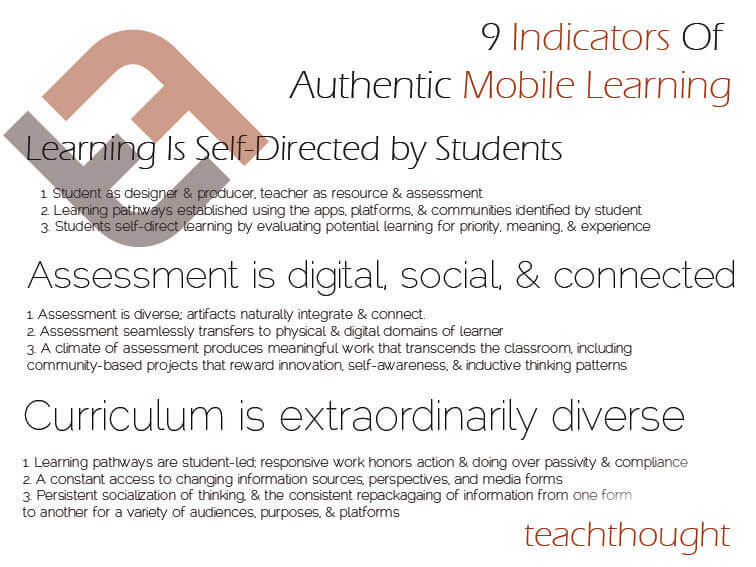
by Terry Heick
The idea of ‘mobile learning’ used to be exciting and seen as innovative and even central to the learning of the future. It was a matter of contrast and timing, of course. ‘Mobile learning’ was new because mobile technology had exploded in popularity (largely due to the rise of smartphones and tablets).
The possibilities were enticing–students learning anything from anywhere at any time–and tangent ideas like BYOD surfaced themselves as potential game-changers in education. Like so many other potentially powerful trends, mobile learning–at least as we considered it–never really took off and today, the standard for mobility is a laptop in a classroom instead of a student with an iPad or smartphone moving between groups in different classrooms, much less actually moving around and within a human community interacting with people, places, and knowledge (via mobile devices).
While rarely realized in these forms, that doesn’t mean that mobile learning doesn’t have considerable potential for you as a teacher (more on that below).
Modern Trends In Education Technology
So many modern trends in learning are based on technology.
Game-based learning, mobile learning, the flipped classroom, blended learning, and more all depend on technology at the core of how they work. But these shifts bring with them other more important trends that challenge the cognitive demand on students, and the requisite instructional design and lesson planning on the part of teachers. Chief among them is the potential for the personalization of learning.
You can’t just add tablets to old learning models and expect success. If anything, this overly simplified can seem to discredit the performance of learning technology, making future thinking and buy-in even more challenging. Designing instruction around tablets requires some slight shifts in how you view when, why, and how learning happens.
The following characteristics describe some of the shifts you can make in the way you plan lessons and design learning experiences with tablets in the classroom. Note, many of these ideas are not ‘practical’ because they fly in the face of school policies, procedures, and infrastructure. These ideas (the impractical ones) are not like ‘school’ and thus may not be useful to most teachers.
See also The Benefits Of Blended Learning
9 Indicators Of Authentic Mobile Learning
Learning is self-directed (who does what in the learning process)
1. Student as designer and producer, teacher as resource and assessment
2. Learning pathways established using the apps, platforms, and communities identified by the student
3. Students self-direct learning by evaluating potential learning for priority, meaning, and experience
Assessment is authentic and connected (how learning is evaluated)
1. Assessment is diverse; artifacts naturally integrate and connect
2. Assessment seamlessly transfers to physical and digital domains of the learner
3. A climate of assessment produces meaningful work that transcends the classroom, including community-based projects that reward innovation, self-awareness, and inductive thinking patterns
Curriculum is strategically diverse (what students learn)
1. Learning pathways are student-led; responsive work honors action and doing over passivity and compliance
2. A constant access to changing information sources, perspectives, and media forms
3. Persistent socialization of thinking, and the consistent repackaging of information from one form to another for a variety of audiences, purposes, and platforms
9 Indicators Of Authentic Mobile Learning

